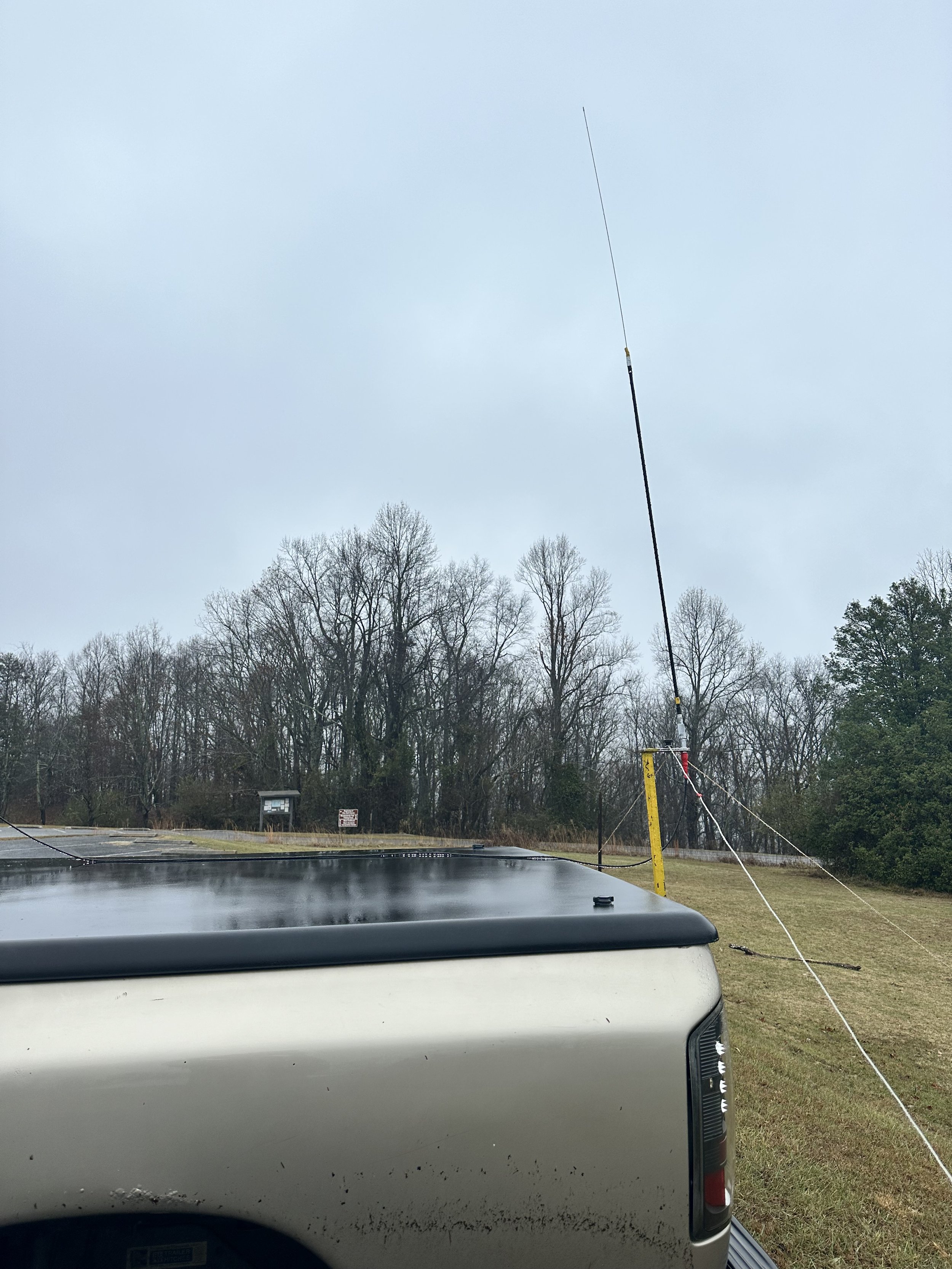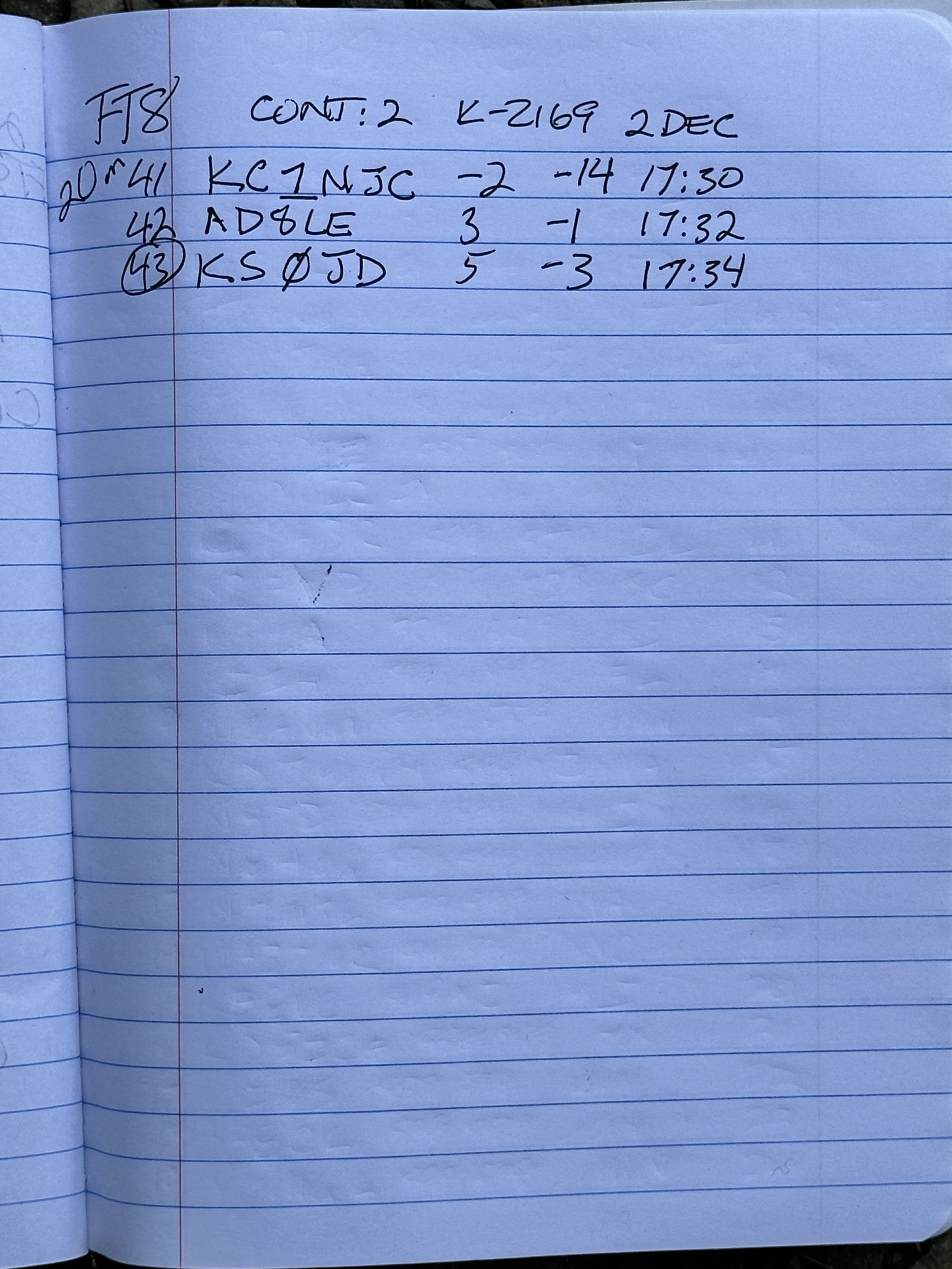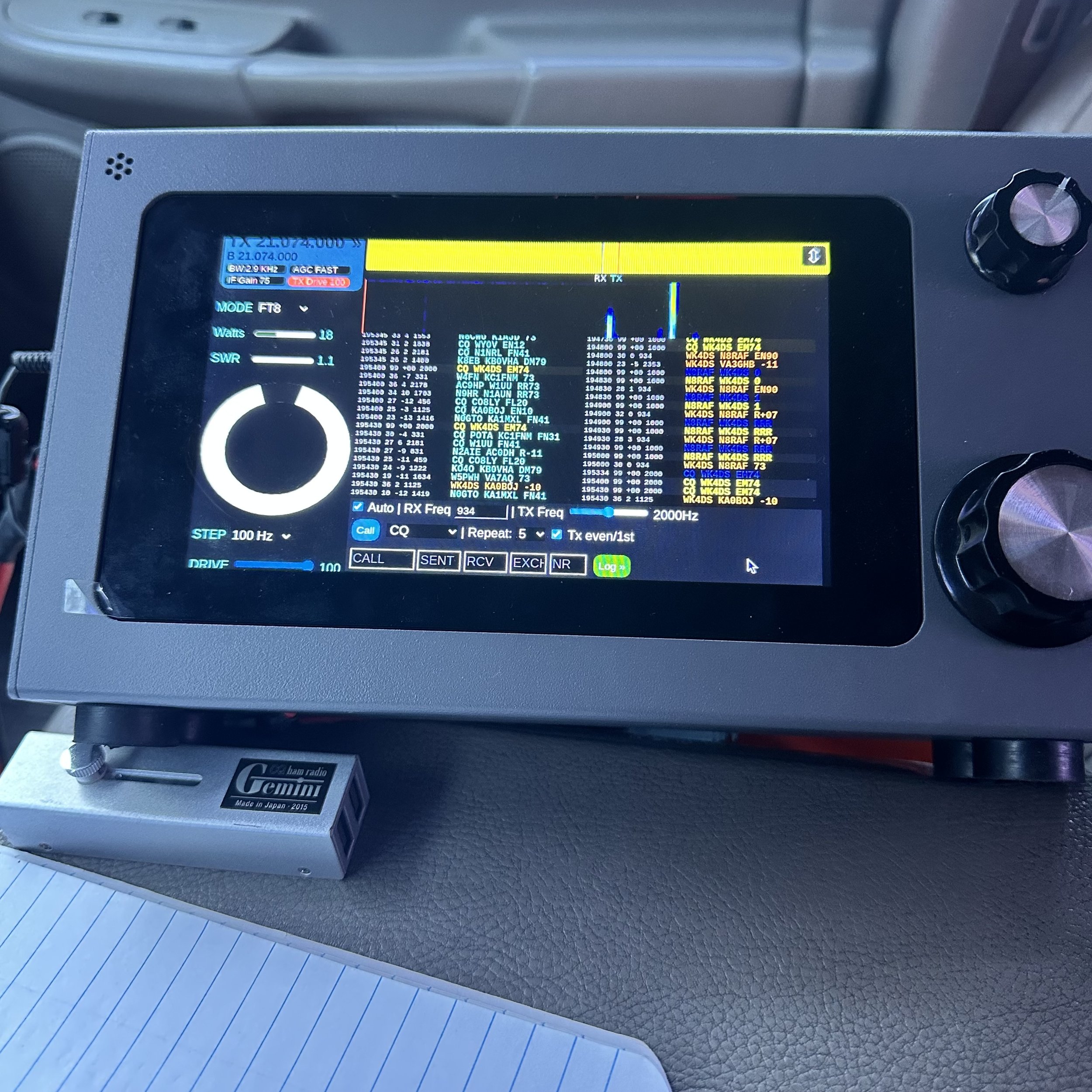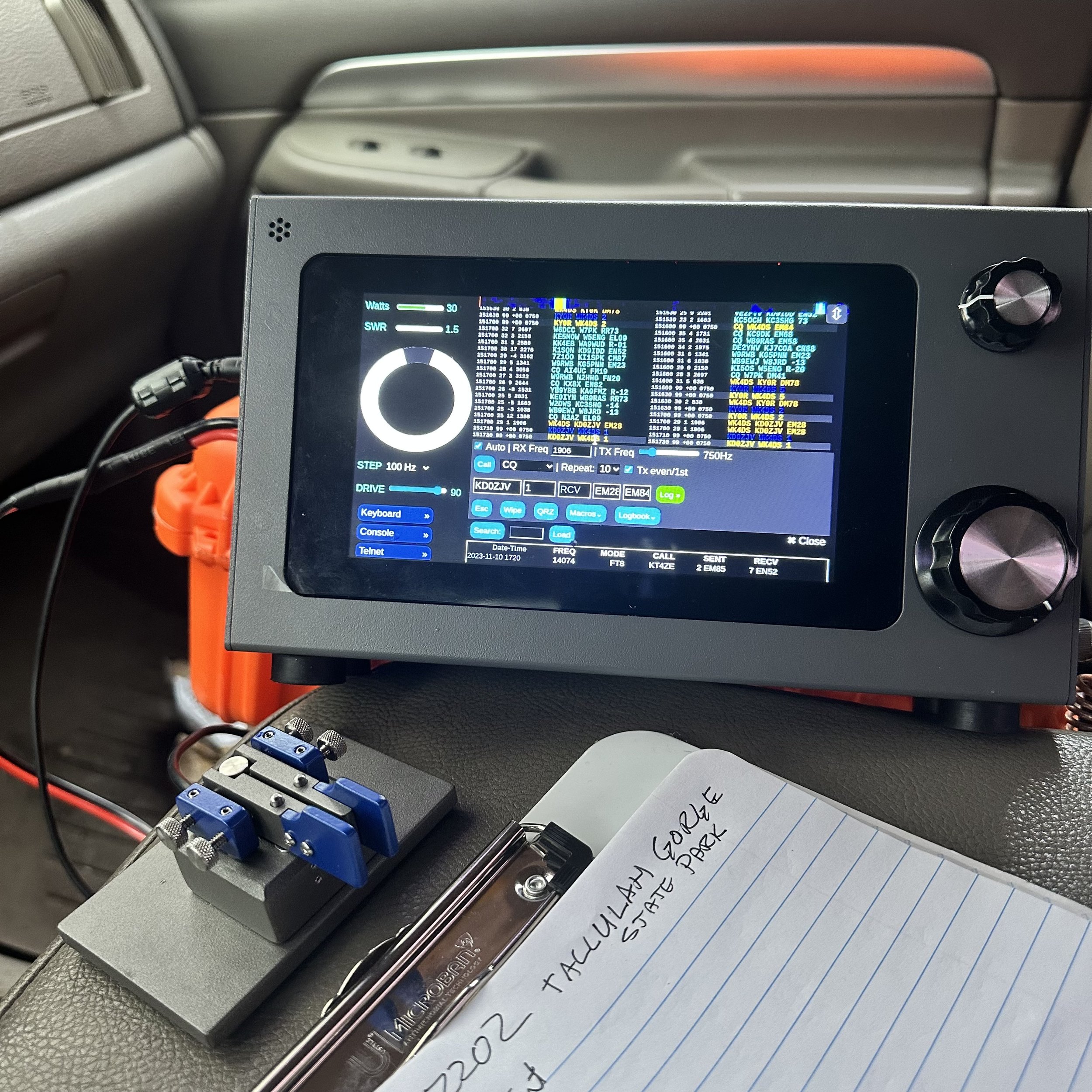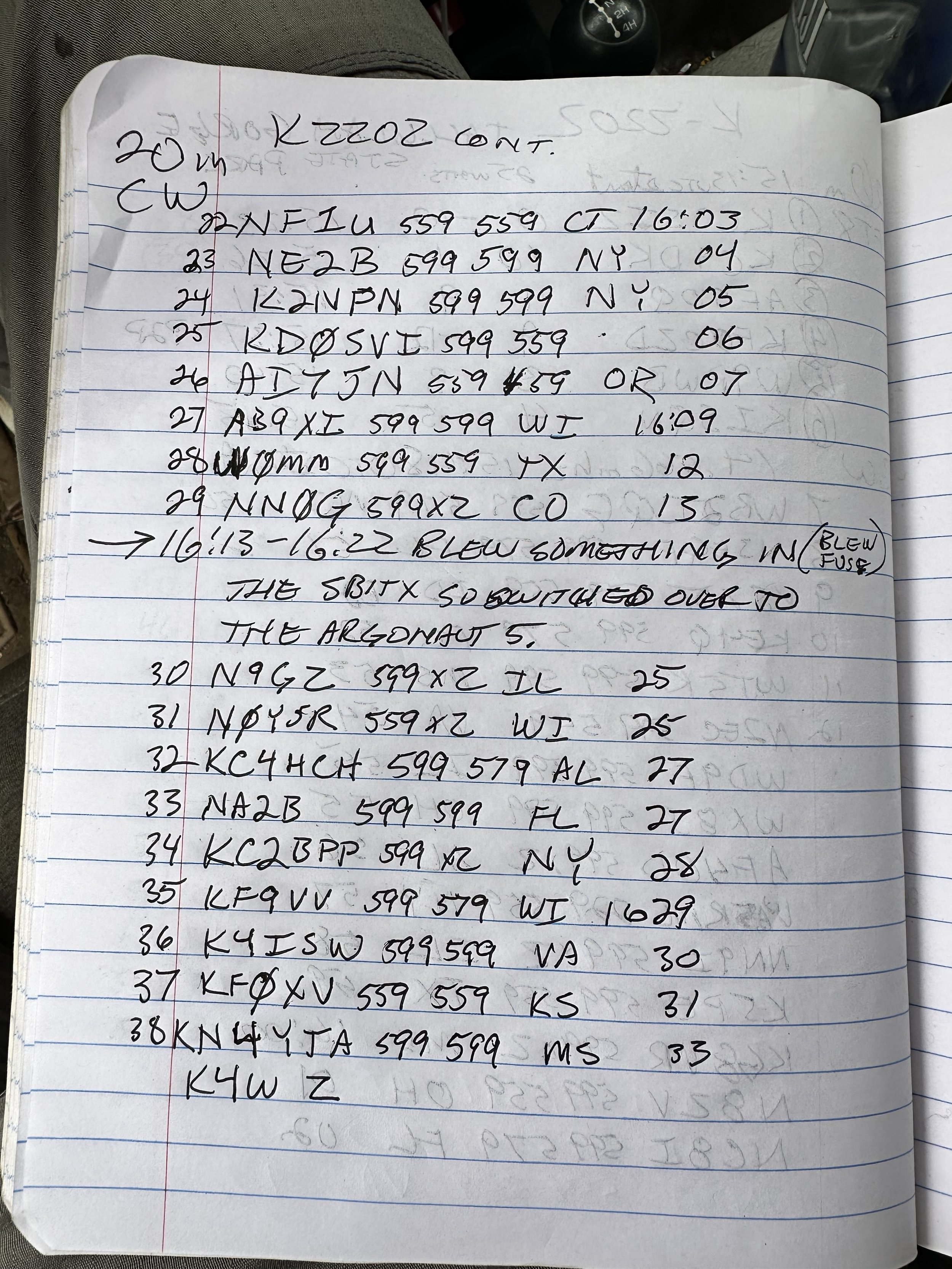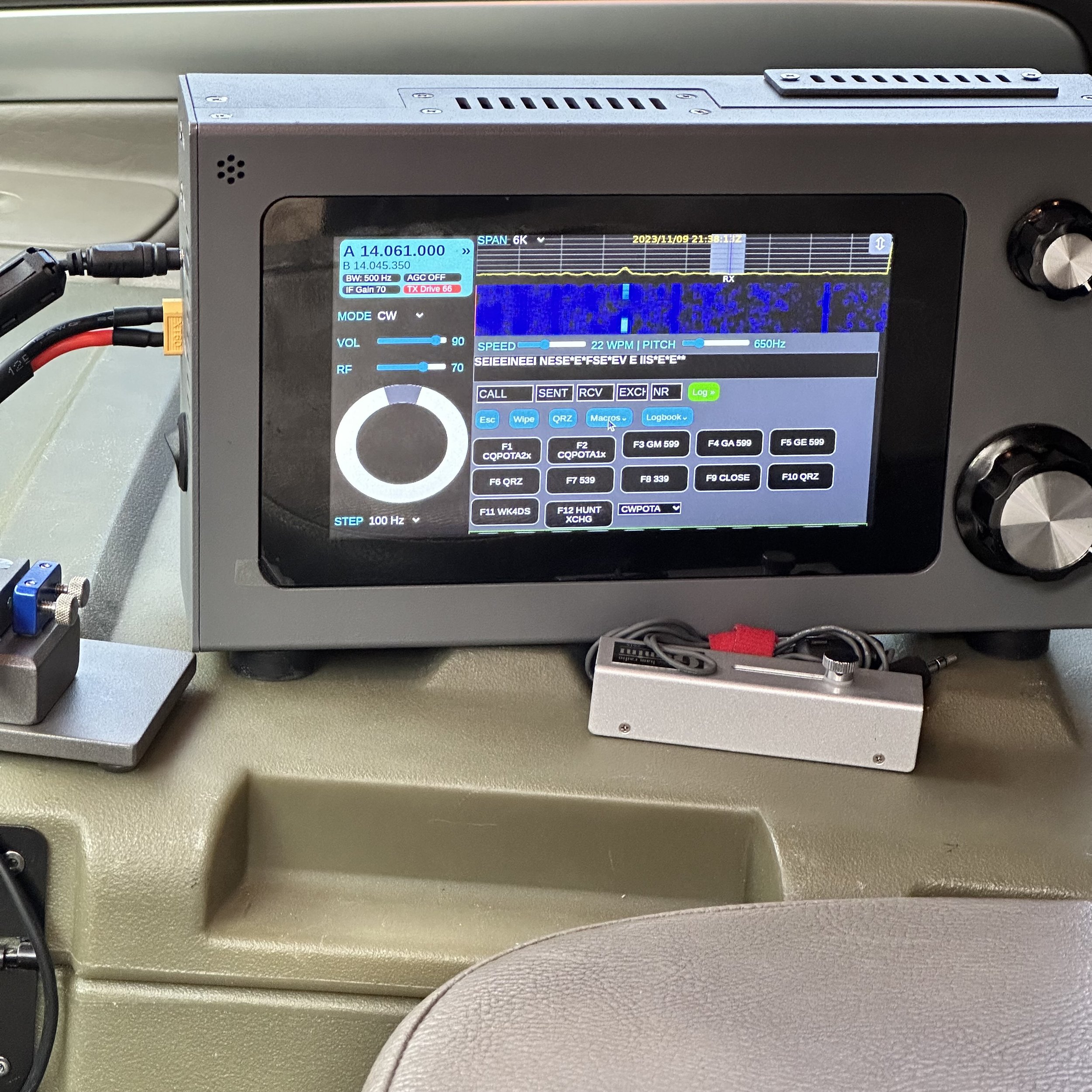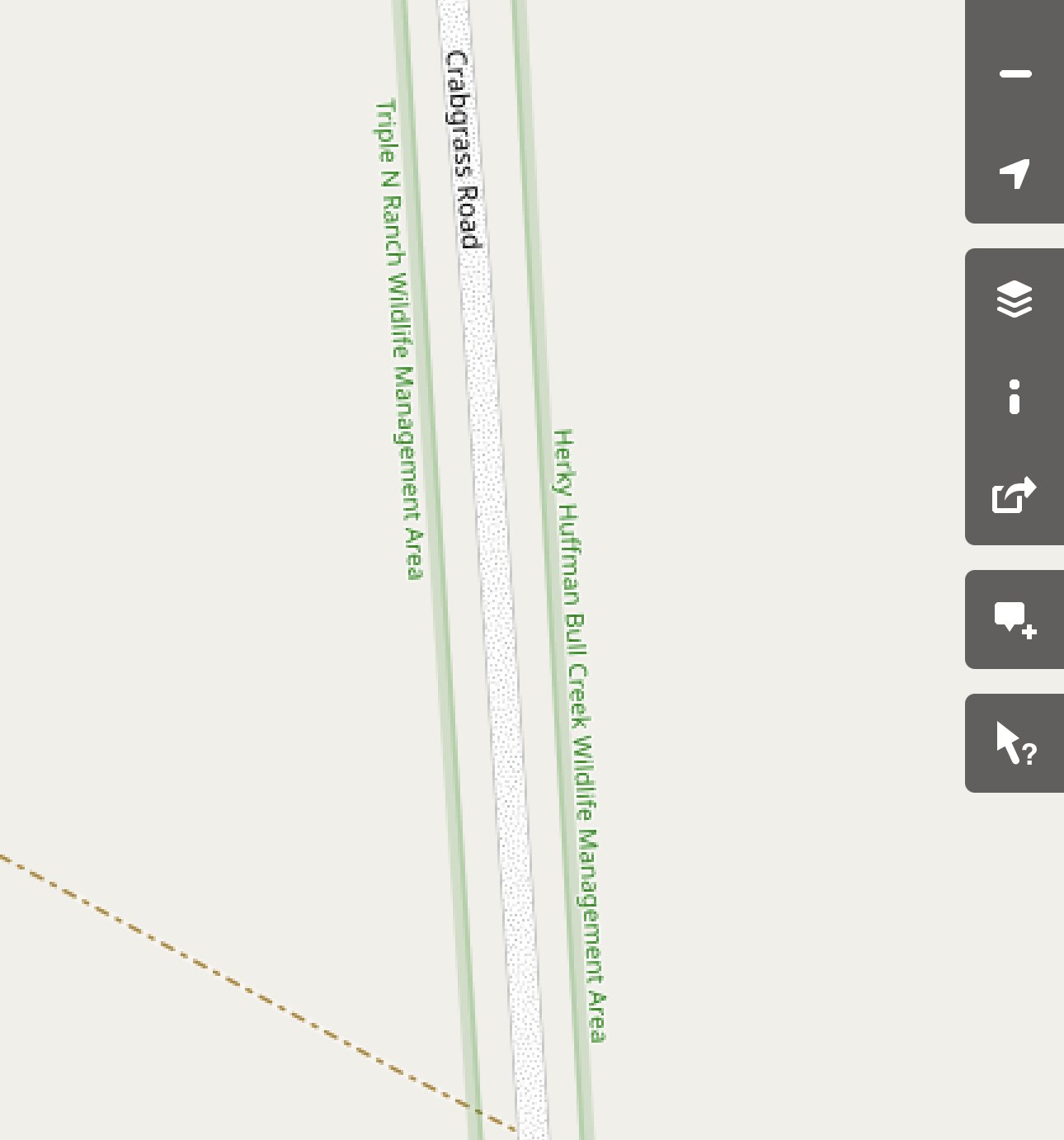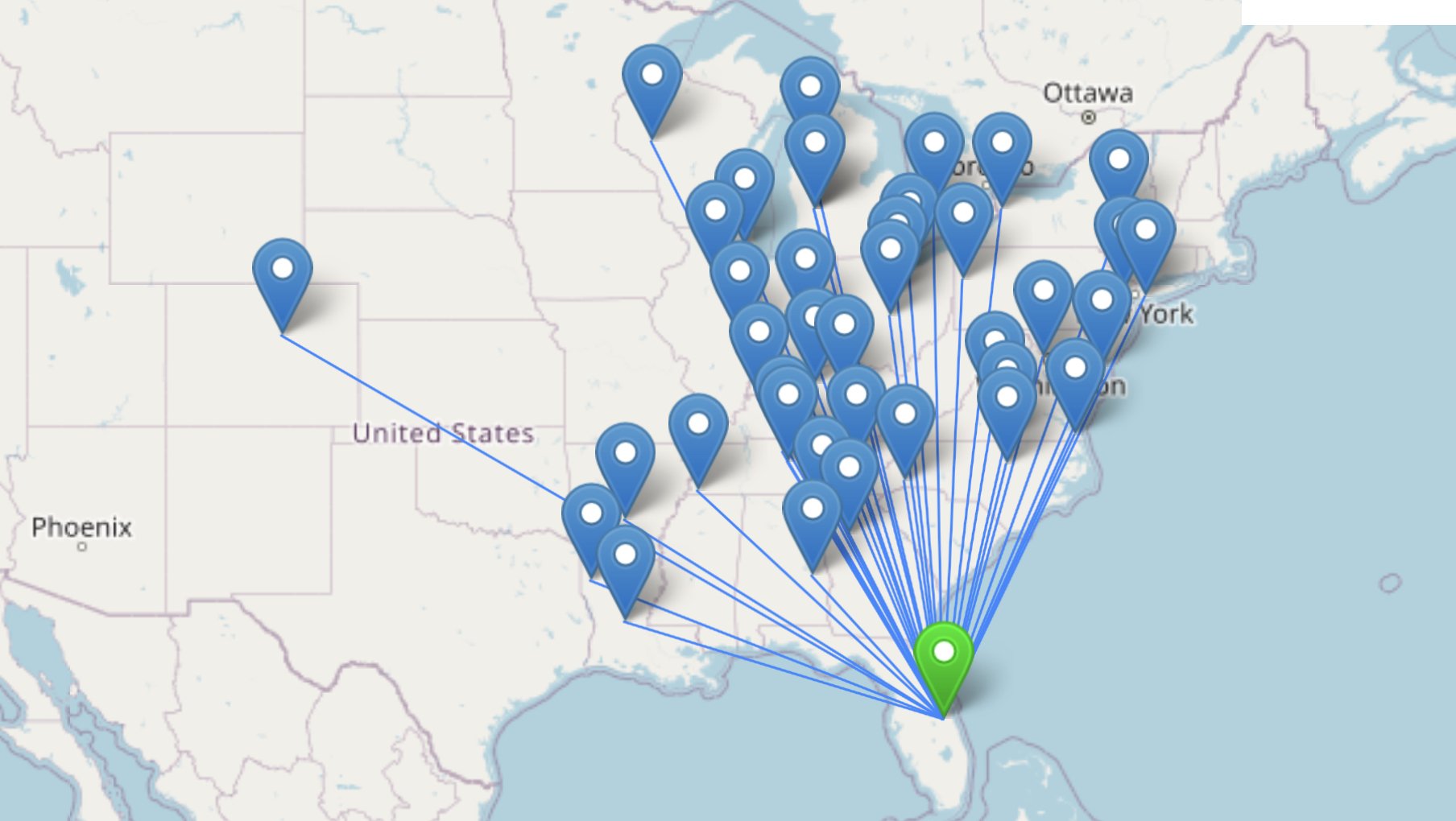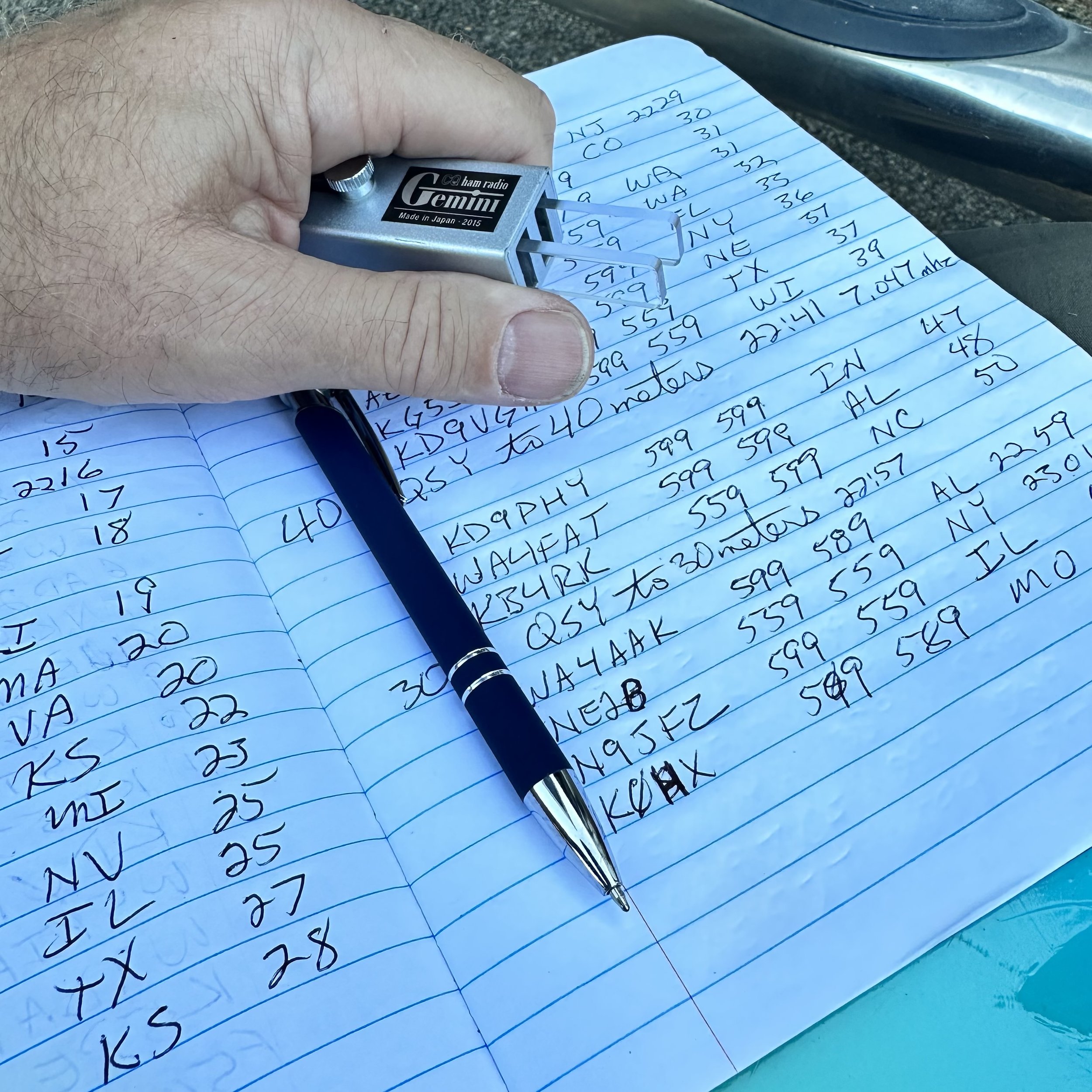It’s that time again. Winter Field Day is just as big of an event for the Dade County Amateur Radio Group as regular Field Day is in June.
We have used the New Home Community Center for a long time now and I want to thank Kevin for his efforts to keep it open for us. Here he is telling everyone something interesting while I take a selfie.
This year it was really warm on the Saturday of the event due to some sort of weather system that had moved in so it was really foggy at times (see the photo of my antenna on the truck below) and rainy at times, but I would rather have this over the cold. Well, that was Saturday, Sunday showed up with the AC on high as it was 43 in the AM and wet from the rain and the temp dropped continuously over the day as well. Not cool…errrr, I mean ….not fun!
Another thing about these events is that there is always something good to eat nearby!
Below we have several people setting up antennas and just being around for photos and such that were having a great time! I missed a couple of people somehow, so I hope they dont mind not being included in the blog…like W4EMA, I really dont know how I missed getting his photo, I kept having to walk past him… figures.
Roger KG4WBI (above) stopped by to visit even though he was still getting over the crud. He is always a wealth of knowledge about all sorts of things.
Below is Todd KK4YLF with his beautiful station he setup. This machine had a touch screen and all sorts of other tricks up it’s sleeve to allow it to work really well. It was impressive to see it setup for a field day site to say the least.
Alright Hollis, what is going on here? Lol. You look WAY to comfortable. LOL…
Below Josh is working some HF SSB on his FT891 into an EFHW and it worked well. How well? I’ll get to that in a little bit. There were stations setup everywhere this time.
Above is a photo of the display on the sBitx where we was using FT8 (yes, I now know this is not an allowed mode for winter field day…now, I guess I should read the rules more carefully first) and making contact with ZD7Z. This was a particular exciting QSO for us as we had randomly just hopped on 15 meters since no one else was up that high on their radios and he was the only station on the air up there. So we figured why not try to get a QSO? He actually heard us! We were blown away at this as we had a small radio on a wire antenna (Josh’s EFHW that I mentioned earlier) with expedient rigging and it still worked. We played around for a while and made several contacts on FT8 after that and could hear many more in other areas…and on a different band. Seems there was some sort of contest happening somewhere else at the same time and I mixed that up at times. Live and learn.
When I arrived, I just threw the radio together on the bed cover as the rain had stopped and wanted to play with it some so I made something like 20 FT8 contacts on it before I shut it down for the afternoon with many being in Europe as well as North America. It was a great day and this blog post didnt have quite as much dialog in it as usual, but there were a lot more photos this time so there is that. I hope you have a great day and till next time, 73.
Addendum: I have one more photo to share. Kevin got a photo of me as well as Ricky and Josh so W4EMA is now in the blog! Thanks Kevin, for the photo!














